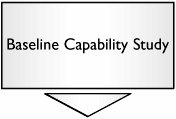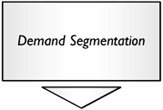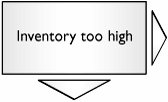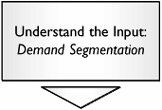Section U. High Forecast Variation
U. High Forecast VariationOverviewForecasting, from a process perspective, is a guess as to what the process should be doing at a certain point in time in the future. Interestingly enough, this Problem Category seems to be one of the first problems requested early in any deployment of Lean Sigma. This is usually due to a misunderstanding of the root cause of the problem. Often (mistakenly), the belief is that if a perfect forecast can be generated, planning the operation of the process will be straightforward. In fact, the reality is that it is a more responsive process that creates better forecasting rather than the other way around. Hence, the initial focus should be on reducing Process Cycle Time and more importantly Process Lead Time to reduce the need to plan so far ahead. For more details see "TimeProcess Lead Time" and "TimeGlobal Process Cycle Time" in Chapter 7, "Tools." In parallel with our efforts to make the process more responsive, we should look at the interaction with downstream Customers to smooth variability in demand. Finally, after all opportunity has been captured, we should look at forecasting itself. Examples
Measuring PerformanceThe most common way to measure performance of a forecast is to use variance to forecast. This is measured by taking the aggregate deviation from a cumulative forecast. For example, starting at January, forecast the production volumes as a cumulative number of entities (number of units, Kg of product, etc.) or dollars ($). At any point, the forecasting system is measured by how well it predicted the cumulative actual production. This can be frustrating for all concerned because if the forecast is off in January, it more than likely will be off all year due to the accumulation issue. A better forecasting metric is to use variation from plan in agreed time buckets.[16] For example, forecast volume weekly and then measure the actual production's deviation from the weekly forecast. If the actual volume is under forecast, log a negative offset (five units under would be written as 5, 5Kg, or $5). Similarly, if actual is above forecast, log a positive offset. For the column of offsets, take the mean and standard deviation for a rolling period of time (typically this is 612 months in the manufacturing industry). The time period needs to be short enough to be considered "current," but long enough that there are enough data points to calculate mean and standard deviation. Thus, to forecast daily, use a rolling month (i.e., calculate the offsets for the past 30 days); if forecasting weekly, use a rolling 6 months (i.e., calculate the offsets for the past 26 weeks).
Tool Approach
The vast majority of improvements to forecasting doesn't come from improving the forecasting processes directly, but by eliminating noise from the operations process itself (i.e. the process that is being forecasted). Eliminating noise in the operations process will dramatically improve our ability to forecast accurately. The question we should ask ourselves is "Why are we asking the forecasting question in the first place?" Data will be needed to answer the question, so apply the following to get the necessary evidence:
After the preceding issues have been addressed (the noise in the process reduced), there might still be genuine reasons to look at forecasting:
Create the forecast around the smooth-demand entity types first and then treat the variable types separately. It might be suitable to set up the smooth-demand items (sometimes known as runners and repeaters) on their own operations line(s) and thus run effectively as a separate (high-volume, smooth-demand) business. For the highly variable entity types (sometimes known as strangers), consider again
Again, we look to operations and perhaps process these entity types separately on their own stranger line, the core competency of which is the ability to do every entity in a custom way and have rapid changeovers between entity types. From this point forward, forecasting essentially becomes a matter of mathematical modeling, simply represented by the familiar equation Y=f(X1, X2,..., Xn). The tools used form a family known as Time Series Analysis. In simple terms:
To model effectively, the time series data is broken down into its key elements:
These elements are modeled individually using tools such as regression, ARIMA (autoregressive integrated moving average), and S-curves, and the models are laid back on top of each other to create a prediction of future demand. Although regression is covered in Chapter 7, the combined application of these tools to create a forecast is well beyond the scope of this book.[17]
|
EAN: 2147483647
Pages: 138









